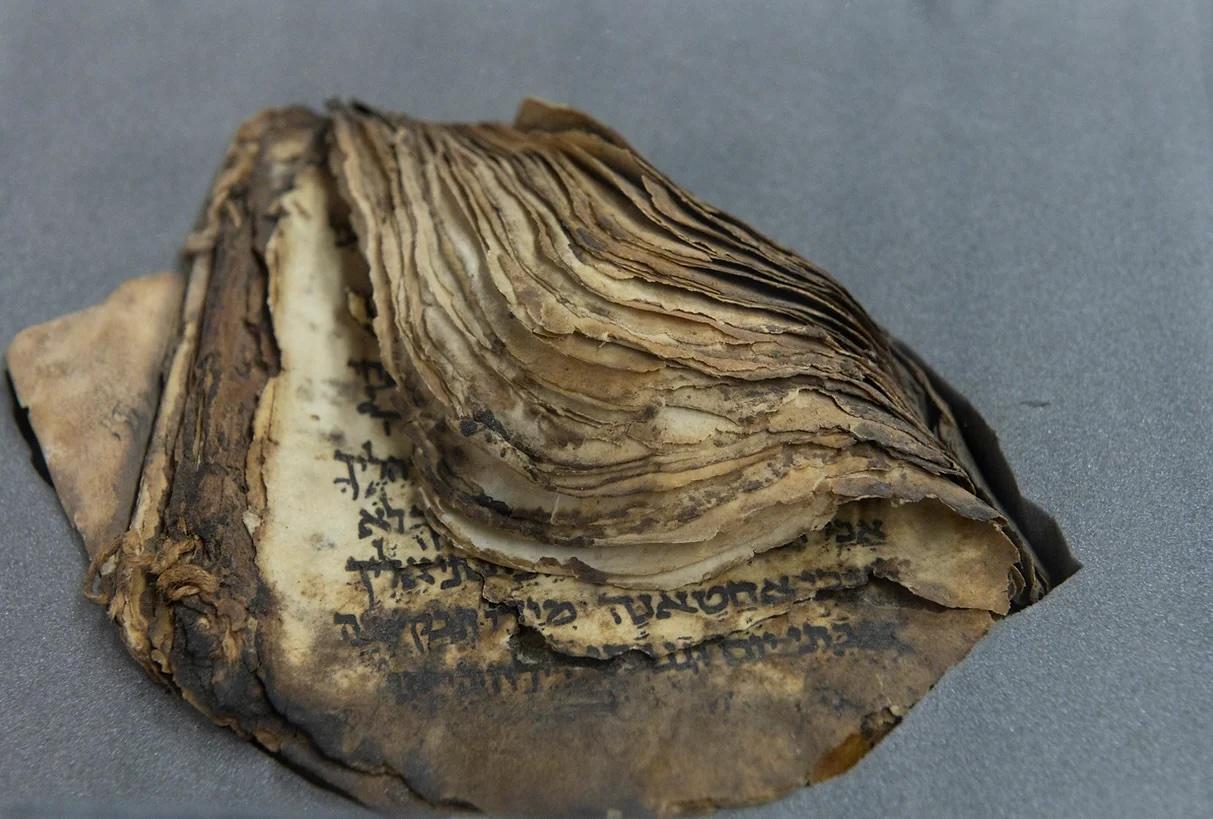The content and images in this curriculum and presentation are copyrighted and trademarked. Photographs’ subject matter is divided into categories. All photographs are by Zion Ozeri. You may only use the presentation or parts of it while implementing the Picturing Israel in your school. For any other use, including reproduction, you must get special permission from Zion Ozeri. The use of the following content, which may be objectionable, is at your own risk, and Zion Ozeri holds no responsibility to evaluate the accuracy, completeness, and usefulness of any content provided, prior to your use. You may contact Zion Ozeri for any questions: zion@zionozeri.com
Middle Ages
Lesson plan by Zion Ozeri and Josh Feinberg

Cairo Geniza Collection, Cambridge University, London, UK, 2019
All images © Zion Ozeri. All Rights Reserved.
Look closely at this image:
- Describe what you see. If this item looks old to you, describe what you see that makes it look old.
- What do you notice about the writing? What assumptions or conclusions might you draw about this object?
- Where do you think you might find an object like this?
- Why might someone want to preserve or to hold on to an old object like this? Why not throw it away? What types of old objects would you (or do you) like to hold on to?
This manuscript piece is one of about 400,000 written fragments that were found in the Cairo Geniza. A Geniza is a storeroom for sacred Hebrew books that are no longer usable. Rather than toss or destroy old books and manuscripts containing Gods name, Jews traditionally put them in a Geniza or bury them in the ground out of respect.
Cairo was a center of Jewish life and learning for centuries during the Middle Ages. When the contents of the Cairo Geniza were first examined in the late 19thcentury, it was found to hold more than a millenniums worth of documents from the Cairo Jewish community and across the Jewish world. Among the most significant papers found in the Geniza were writings by the great medieval Rabbi Moses ben Maimon (known as Maimonides or the Rambam), who lived in Cairo during the late 12th century.
The Cairo Geniza also included letters and other documents sent from Jews around the world during the Middle Ages including Jews living in the Land of Israel reporting on events, seeking advice, and asking questions about Jewish law and practice.
Take a look at this document from about 1100 CE that was found in the Geniza:
Cairo Geniza Letter - University of Cambridge
It was sent by the leaders of the Jewish community of Ashkelon, in the Land of Israel, who were in Egypt at the time seeking help for their community. Christian European Crusaders had invaded the land and conquered Jerusalem. The Jewish residents of Ashkelon faced an influx of refugees and were forced to pay heavy ransoms to gain the release of Jewish captives and holy texts.
Learn more about the Cairo Geniza and the Jews of Cairo here:
Cairo Geniza - University of Cambridge
Click on the Translation tab in the website above to read the first two paragraphs of the letter.
- How do the writers describe the challenges faced by their community?
- The second paragraph describes the help provided by the honourable sheikh Abu l-Fadl Sahl son of Yusha son of Shaya, an agent of the Sultan. How did he help? What does his assistance suggest about relationships among different groups at the time?
- What happened to those who remained in the hands of the Franks (Christian Crusaders from what is now France)?
- Why do you think the writers of this letter were seeking help from the Jewish community of Egypt?
- Have you ever been asked to help Jews in other parts of the world? Do you feel a special need or pull to help other Jews? Why or why not?
Learn more about the Crusades here:
The Crusades - Jewish Virtual Library
How the Crusades Affected Medieval Jews in Europe and Palestine | My Jewish Learning
Follow-up activity:
- What contemporary documents, personal or communal, tell stories worth saving?
Find an old document that is meaningful to you, at home, in your synagogue (etc.), and take a photograph of it. Be sure the image shows enough detail to appreciate its age, texture, or writing style.
For example: a grandparent’s letter, a family recipe, an old synagogue newsletter, siddur inscription, an ancestor’s ketubah, a ticket/program from a historic event.
Along with the photo, write or a short reflection that explains what the document is, how it is personally meaningful, and why it is worth preserving.
